|
As part of my travels to Helsinki as a Fulbright Finland Inter-Country Travel grant recipient, I had the honor of meeting Kaarlo Uusitalo, Director of Resonaari Music Center and creator of Figurenotes. I met him at the programʼs site – a home in a residential neighborhood, which provides unique musical experiences to 350 students ages 8 to 80 years old, many of whom receive additional support needs. I sat down with Kaarlo at his dining room table while music-making could be heard throughout the house. Kaarlo shared the inspiration behind the creation of the Resonaari Music Center, which has received worldwide recognition. In 1995, Kaarlo, a therapist working with individuals receiving additional support needs, found that traditional counseling was not serving many of his clients. He felt that each week he was starting from scratch because his clients were not able to retain what was discussed, understand causal relationships between their actions or easily create structure in what can be an otherwise chaotic world. Fortunately, Kaarlo was able to draw from his experiences playing in a rock band to find a solution: teach them how to play music! He had multiple reasons. Music is a social activity, based upon patterns, has cause and effect relationships, and helps build cognitive and social-emotional skills. What started with only a few pupils in 1995 has grown to 350 students today, ages 8 to 80, who play together in bands, compose music and perform on the stage. Kaarlo has seen how playing music enhances self-esteem, enriches lives and prevents loneliness and marginalization. Kaarlo found that the biggest stumbling block was learning how to read music, which is quite abstract and a challenge for any beginning music student. So Kaarlo created a musical system as concrete as possible using patterns of colors and shapes so that you play what you see. This musical system is called Figurenotes, which allows beginning musicians to participate in music almost immediately. After establishing this foundation of music as concrete patterns, students can transition to reading traditional notes. On site, Resonaari teachers can transform traditional notation into Figurenotes so that they can provide music that students request. Figurenotes is used in Italy, Estonia, Japan, Ireland, Latvia, United States and the United Kingdom. In fact, I attended a Figurenotes training at Drake Music Scotland, which Iʼll share in another blog posting. Here is a video introducing Figurenotes. Traveling from one room to the next, whether a band or individual lesson, I observed students with self- confidence, sense of purpose and strong sense of identity. In particular, I will always remember meeting one member of the girls rock band, ResoRock Girls. She was running a piece on her bright red electric guitar as part of a one-on-one lesson and in a subsequent session working diligently on lyrics to an original composition with her band. Kaarlo also shared the story of the rock band, Riskiryhmä: One day after a Resonaari band performance, several women in their 70ʼs approached him and asked if they could learn how to play in a rock band, thus fulfilling a dream theyʼve shared since they were young. Not only did these ladies learn how to play at Resonaari using Figurenotes, they continue to perform regularly now in their 80ʼs. Talk about a sense of well-being! Watch them perform at a Resonaari concert in May 2018. Kiitos, Kaarlo and Director Markku Kaikkonen for welcoming me into your inspiring Resonaari Music Center! I appreciate you taking so much of your time to share the history of Resonaari, as well as the inspiring work of musicians and bands honing their craft in practices rooms throughout this two-story home. I look forward to watching the upcoming Resonaari concert online this May 13th and 14th. You can watch last yearʼs concert on Youtube!
1 Comment
Finland has been a longstanding leader in education. This past week, as a Fulbright Finland Inter-Country Travel recipient, I gained a better understanding why. The Fulbright Finland travel grant for US Fulbrighters in Europe is unique among many of the European Fulbright participating countries. What makes it so distinctive is that school teachers also are eligible to apply, not only professors. Terhi Mölsä, Chief Executive Officer of Fulbright Finland Foundation, shared the reasoning behind their decision: they value having teacher voice, viewpoint and expertise at the table when discussing solutions to todayʼs global challenges. This reason speaks to the cross-disciplinary, holistic and innovative spirit of the Finnish education community. The Foundation hopes that other Fulbright countries will join them by including school teachers as eligible participants in their travel grants so that Fulbright Finland teachers also can have the same opportunity.
During my five days in Helsinki, I had the opportunity to attend a Future Songwriting training by INTO School, visit the Resonaari music program and interview its founder, meet the Fulbright Finland Foundation staff and fellow Distinguished Award in Teaching recipient, Argine Safari, present to the INTO School team and several staff members of Lycée Franco-Finlandais d'Helsinki and experience a Finnish sauna!
The Creative Europe program of the European Commission selected Future Songwriting in
July 2018 as the only major collaborative project under Finnish management. Future Songwriting is based on the INTO SCHOOL concept, developed in Finland called Ihan Oma Juttu. The main goal of the project is to make composing an integral part of music education, inspire teachers and pupils to take a creative approach to music and create their own compositions. The Finnish expression “Ihan Oma Juttu”,meaning ‘my own thing’, refers to the joy that children can experience when creating their own music. The Future Songwriting project will provide training using Garageband for teachers in 15 schools in three Finland, Germany, and France. This hands-on training will take students through the process of creating, recording, mixing, performing, and publishing. I was honored to attend the training as a member of the Musical Futuresʼ team and present the Musical Futures approach to teaching and learning in the school classroom. Both Musical Futures and INTO School were recognized for their innovative contribution to the field of education by the global nonprofit HundrEd.
During the first day of training, the INTO team had us select an item from a bag of found objects. I pulled out a plastic necklace, while others the lid to a pot, a spoon, a book, stapler, etc.). We then recorded the sound of our object any way we liked and created a Found Sound Orchestra by holding our iPads in a semi-circle and having volunteers conduct us – gesturing certain sounds to be played or gradually asking us to play louder or softer using our volume keys.
Then the INTO team guided us through all of the Garageband Smart instruments including keyboard, guitar, drums, electric bass and strings. Again we played as an orchestra by limiting our chord menu to C, G, Am and F and moving from one chord to the other every 8 beats. The next day, we looked at plug-ins and song structure before creating our own 32-bar compositions using this form: Intro, Verse, Chorus, Verse, Chorus, Bridge, Chorus, Chorus. The final day we observed a multi-age class of 20 students between the ages of 11 and 14 work together in teams to work through the same process. As always, the kids were much more adept at using the tools and jumped right into the creative and collaborative process.
The INTO Team believes that “the project has a positive effect on the well-being of young people and that it prevents social marginalization. Marginalization of children and young people is one of the most significant social problems in Finland. When a young person is marginalized and falls into social deprivation, it will cost society roughly one million euros before he or she turns 60 years old.” I appreciate that the Finns approach education with holistic and long-term goals.
This belief in the power of music for well-being, creativity and student identity/agency is also shared by Kaarlo Uusitalo, the creator of the Resonaari Music Center. I had the honor of meeting Kaarlo at the Resonaari site – a home in a residential neighborhood, which provides unique musical experiences to 325 students ages 8 to 80 years old, many of whom receive additional support needs. I sat down with Kaarlo at his dining room table while music-making could be heard throughout the house. His interview and tour of the program deserves a separate blog post.
While at the Lycée Franco-Finlandais d'Helsinki, the music teacher showed me the kantele, a traditional Finnish plucked stringed instrument from the zither family. Here is Merja Soria singing an ancient Finnish lullaby, Nuku Nuku, accompanied on the kantele.
I also had dinner with fellow Fulbrighter, Argine Safari, who had been observing a music class using a phenomenon-based learning approach. It was wonderful catching up and exchanging ideas. And lastly, I enjoyed a sauna at Allas Sea Pool with members of the INTO school research team. While at my Fulbright Finland luncheon, Terhi shared that the Presidential Palace is directly across from the Allas sauna, which speaks to the egalitarian nature of the Finnish culture. “Where else can you take a sauna and see the President’s Palace while youʼre cooling off in the outdoor seapool? ” I agree!
Kiitos, Fulbright Finland Foundation and the INTO Team, for making my trip to Helsinki such a memorable and educational one. You live in a beautiful city! The time spent at the Fulbright Finland Foundation office talking about educational issues is testimony to how supportive, involved and interested the entire Fulbright Finland team is in forming lasting international relationships with its grant recipients. I look forward to connecting with the Friends of Fulbright Finland in Alaska now that I’m officially an alum!
This week I had the privilege of shadowing Fran Hannan, Managing Director of Musical Futures (MF), as she delivered training in MF Just Play: Music-Making for the Whole Class approach for teachers, including modeling it with a class of 11 year-olds from Leeds. Musical Futures is celebrating its fifteenth year since the launch of the Paul Hamlyn Foundationʼs special initiative. One message that I heard often from Fran is how Musical Futures democratizes music education by making music accessible to all children at whatever their previous level or experience. Musical Futures is founded on this principle and provides a model of self-directed learning that enhances student motivation, enjoyment and skill-acquisition in music lessons by tapping into real-life learning practices of popular musicians. And what I witnessed during the training involving the class of 11-year-olds was just that: engagement and enjoyment by all students start to finish and choice built into each activity. Musical Futures provides tools that allow students to start playing an instrument as a whole class ensemble right away, while differentiating for the wide range of musical skills that children bring with them to school. For example, the major and minor chord card placed on an electronic keyboard (above photo) allow students to play in any key with the root designated in red and the 3rd and 5th notes in blue. Kids naturally self-selected the level of complexity based upon their ability and comfort level. Some played one note, while others played two, all three or both hands. Some chose only to play one chord, while others played all three chords. Some played chords on beat one, others played on all four beats, while others chose to play a more complicated rhythmic pattern. I observed students increase the level of musical challenge throughout the lesson, but it was always student-directed, not teacher led. Fran shared this same type of differentiation and student choice for playing a drum kit by demonstrating the Musical Futuresʼ approach to chair drumming, a popular resource that can be found on the Musical Futuresʼ website. She also suggested to the teacher some creative solutions to soften the potentially loud sounds from wooden or plastic chairs: Jigsaw puzzle floor mats for the snare and slit foam tubing for the high hat. And if you donʼt have a class set of drumsticks, use chopsticks!  Musical Futures brings the informal approach of out-of-school learning into the in-school setting. Instead of a formal setting which focuses on the individual, has a linear approach and is teacher-led, an informal approach is social, experiential, networked and non-linear. Download a free copy of the Musical Futures Resource pack and follow them on Facebook and Twitter. Every resource that Musical Futures offers on its website is done with the practicalities of school classrooms in mind. Fran is passionate about making music accessible not only to students, but classroom teachers. Hear testimony from music teacher, classroom and support teachers and student reflecting on this day of Musical Futuresʼ whole class music-making. For more information on all of the trainings and resources that Musical Futures offers, please see their website. Here is a video a created highlighting the Just Play training in Leeds to try to capture the enthusiasm and engagement by all involved. Thank you, Fran Hannan and Musical Futures, for your inspiring work in music education! When I was young I lost the confidence to improvise and create my own music. Now, years later and a classically-trained musician I donʼt want my student to have the same experience that I had. I came to realize that I needed more training in how to effectively integrate non-formal and informal practices into the structure of an American public school and a Sistema-inspired music room. This is the main reason why I am conducting my Fulbright in the UK: to study the innovative learning approach of Musical Futures. Inspired by UCL Professor Lucy Greenʼs (2005) informal approach to learning in the music classroom, Musical Futures was established in 2003 as an initiative funded by the Paul Hamlyn Foundation to help address the lack of engagement exhibited by many UK youth in secondary school music programs. Greenʼs informal learning pedagogy provides classically trained instrumental and classroom music teachers with practical tools to successfully integrate informal practices of popular musicians into their teaching. According to Green (2013), "Informal approaches tend to involve a particularly deep integration of listening, performing, improvising, and composing throughout the learning process" (p. viii). Musical Futures was founded on Greenʼs model, which encourages student-driven learning, collaboration, and group performance. Through self-teaching and providing a relevant social context, Musical Futures helps students develop their musical identity and gives them an equal voice in the classroom (Wright, 2014). Programming includes creative music-making through instrumental ensembles, singing supported by mobile technology and whole classroom approaches to teaching drums, keyboard, ukulele, guitar and bass to "keep music alive in our schools in order to nurture the creative talent of tomorrow" (Musical Futures, 2017, para. 3). In 2017, Musical Futures was selected as one of the top ten innovative education projects by the global education non-profit HundrED. My next blog will focus on the Just Play curriculum and training, which Fran Hannan modeled for classroom teachers and primary students in Leeds, but I wanted to end this post with a short video of Lucy Green explaining the informal learning process and what students and teachers can learn from popular musicians. References
Green, L. (2013). Hear, listen, play!: How to free your studentsʼ aural, improvisation, and performance skills. Oxford: University Press. Green, L. (2005). The music curriculum as lived experience: Children's “natural” music-learning processes. Music Educators Journal, 91(4), 27-32. Wright, R. (2014). The fourth sociology and music education: Towards a sociology of integration. Sociology. I attended a Make Music Day UK planning meeting at the Scottish Music Centre just down the street from the University of Strathclyde. According to their website, Make Music Day was launched in France June 21, 1982 as the Fête de la Musique. Held on the longest day of the year, "The Fête has turned into a true national holiday: France shuts down on the summer solstice and musicians take over. Almost 8% of the country (5 million people) have played an instrument or sung in public for the Fête de la Musique. Thirty years later, this free celebration is held in over 800 cities in 120 countries. Anyone can participate: amateur, professional, young and old. The only requirements are that the musical event must be free and open to the public. Glasgow was involved last year and plans to increase its numbers for this year. You can help your community launch/expand its Make Music events by utilizing the toolkits, videos and other resources housed on the main website. There is a Make Music Day anthem, Bring Me Sunshine, with downloadable parts for voice, orchestra, ukulele, guitar and piano.
The Make Music Day UK website encourages people to make music a regular part of their lives by checking out the Making Music UK website, which houses a searchable database of the thousands of amateur music groups across the UK. The UK themes include electronic music, libraries, Go Rural, Make Music Day Song, Do It Digitally and International Collaborations. The current list of participating cities, states and countries does not have Alaska on there - yet! What do you say, Juneau? Living abroad for six months could be very isolating, especially when traveling alone. Fortunately music has created pockets of community wherever I go. In Glasgow, I have weekly mandolin and fiddle lessons at the Glasgow Folk Workshop where the customary tea and comfort break is built-in to the 2-hour lesson and allows me to not only mingle with my fellow classmates, but also make new friends. The fiddle weekend in Kelso, also opened me to the network of Fèis going on throughout the year, which often come in the form of extended weekends, holidays or summer camps. It took some digging online to find one or two of these gatherings, but once I attended one, I was dialed into an entire network often through word-of-mouth. Folks attending one Fèis tend to participate in others, so people generously share what they know. These fèisean are great ways to connect with people from all over the UK and reconnect with each other in the future. Fèis Gleann Albainn is one of those gatherings. It is held every March in the beautiful town of Fort Augustus, situated along the shores of Loch Ness (yes, the same Loch Ness monster fame). When I walked into my first fiddle class, I was impressed again by the caliber of teaching talent. One participant quietly gasped in awe of the folks assembled here to teach and inspire us. All of the tutors (pictured above) played in bands and taught extensively. These professional musicians help sustain and grow the number of people playing traditional Scottish music because of their teaching and inspiring performances. Check out their websites and consider supporting their music: Much like Kelso, we arrived Friday night to play a session where folks registered, reconnected, laughed, played and socialized over a drink. Saturday and Sunday were full days of teaching with just a 2-hour break before people gathered for an evening session in pubs throughout town based upon their playing level. Since I was a beginner at Scottish fiddling, I planted myself in the Slow Session held at the hostel where many people visited later to jam through the wee hours of the morning. Like Kelso, these sessions were highly motivational and inclusive. Every space was utilized for mini-jam sessions based upon skill or knowledge of pieces and all were welcome to join. Even though I didnʼt know many of the pieces, I felt much more comfortable learning by ear, especially during the day classes where I held my own - more quickly finding anchor notes, listening for patterns and intervals, and connecting all of this to the basic form of a traditional Scottish tune. Tutors also repeated passages many times over until the sound was more fluid and musical. I used each repetition to isolate a particular skill (i.e. bowing, fingering, staying relaxed, etc.)
When I returned to Glasgow and my GFW mandolin and fiddle lessons, I recognized many of the Fort Augustus faces in the crowd. Yes, music creates community and friendship! For those of you interested in Fèis being offered throughout the year for adults, hereʼs what I found:
I would like to thank FiddleClass.com for creating a list of fiddle classes throughout Scotland, which helped me locate my first Fèis, Leon Firth for his company at breakfast and the bus trip back to Glasgow and Bill Skeoch, for organizing a stellar weekend in Fort Augustus. While in London for the Inclusive Practice in Action workshop, I arrived a couple days early to meet with folks from the Creative Learning Department at Guildhall School of Music and Drama, visit the National Gallery and Portrait Gallery, explore the Churchill War Rooms and see a musical or two (or three). Although I wasnʼt able to meet with anyone from Guildhall, I did learn that the Paul Hamlyn Foundation commissioned Guildhall to develop a creative and collective Classroom Workshopping project as a FREE downloadable resource housed on the Musical Futures website. The website provides teacher notes, downloads and audio and video. In 11 short video clips, Guildhall teachers model the creative composition process with students from the Musical Futures Champion School, Morpeth School. Many of the Musical Futuresʼ resources are free to access. All you need to do is create a Musical Futures account - also free. The website has a wealth of resources and trainings for music teachers across the globe. Check them out! Here is the first of eleven short clips modeling the Classroom Workshopping project: The National Gallery and Portrait Gallery were incredible and overwhelming, but what Iʼd like to highlight is the Churchill War Rooms. I felt like I was traveling back in time, as many of the 20+ underground rooms were kept largely intact - including wartime wall maps, switchboard and telephones, and living quarters. As part of the ticket price, you get a portable audio tour, featuring interviews with key staff and Churchillʼs inspiring speeches. They also have a museum dedicated to Churchillʼs life. An extraordinary man who bolstered the morale and determination of the British people. This a must-stop for anyone visiting London. And finally, I treated myself to a couple of musicals (I am a music teacher afterall):
Jess Thon, co-founder of TourettesHero, opened the Inclusive Practice in Action workshop with an inspiring keynote on inclusion. This one day of workshops and discussions focused on the themes of Early Years, Youth Voice and Social Justice. TourettesHero celebrates the humor and spontaneous creativity that comes from someone with this condition. The mission of this organization is to change the world one tic at a time. Jess shared how her thinking around tourettes transformed when Matthew Pountney, the co-founder of TourettesHero, described her tourettes as a crazy language generating machine and not doing something with it would be wasteful. Jessʼ tics have inspired creative thinking and visual art because her tics often combine words or phrases that spark a new way of seeing things. Examples include: "Hey Siri, butter my toast." "Bought you a helicopter and a standing ovation." "A Jedi Knight in dungarees." This quote came from her video, Hereʼs to Laughing (her tics are in parentheses): "Adults are often nervous about even calling me disabled. They clearly see it as a negative term. I donʼt see it that way at all. Saying Iʼm disabled acknowledges the barriers I face because of a collective failure to consider difference (biscuit). Pretending these barrier donʼt exist doesnʼt make them go away (biscuit)...As soon as we stop shying away from difference, we can start appreciating our similarities (hedgehogs, cats, biscuits)."  Jess shared five ideas to help shape the future of young people because being inclusive doesnʼt have to be difficult:
Their last two points really resonated with me: find ways to stay connected even when the program is over and help them enter this world by showing them how. In many ways, this young man addressed the importance of social and cultural capital, which Alastair Wilson and Katie Hunter at the University of Strathclyde have tried to address with their Intergenerational Mentoring Network, which supports one-to-one mentoring to improve outcomes for youth as they progress through the education system. The network draws on the knowledge, experience and networks of older adults and retirees to help students successfully access careers in which theyʼre interested. I also had a chance to network with many professionals interested in the intersection between music education, inclusion and social justice. Katy Robinson from the National Foundation for Youth Music shared this Reports and Resource page, which includes Youth Music evaluation tools and a quality framework.  And last but not least, I met Fran Hannan, Managing Director of Musical Futures (MF). She is one of the main reasons why I am here in the UK. The work that she has done in the field of making music accessible to all students is inspiring. I am excited to take Musical Futuresʼ trainings that she and her Champion MF teachers will be offering throughout my tenure here. She also has connected me to schools throughout the UK that are implementing Musical Futures approaches in their music class. Thank you, Fran, for your generous spirit! I look forward to March when Iʼll be attending your Just Play training in Carlisle. On my way back from the Winter Fiddle Festival in Kelso, I planned a stop in Edinburgh to visit my friend and fellow Fulbrighter, Shana Ferguson. The train ride is under an hour and I had the good fortune of sitting next to Alasdair Fraser who was also making his way to Edinburgh. During the the trip, he was kind enough to share his thoughts on traditional music and teaching. Alasdair started our conversation by saying that the phrase, "Learn by heart" means just that: music comes from within, not from a sheet of paper. Thatʼs why his teaching style focuses on "undoing" and "unpacking" so that students can look within for their music and have the space in which to do it. Alasdair questioned why we equate music to notes on a staff when music is an aural medium. Each flourish can be played differently each time you play the tune (i.e. how you enter into the note, how long you stay on each note, etc.) Those kinds of decisions come from within and canʼt be constrained by visual representation on sheet music. Alasdair shared that his passion for traditional music comes from a place of anger - a fire in his belly. His grandfather couldnʼt speak Gaelic because it was seen as the language of poverty and the poor so schools wouldnʼt allow it. Alasdair didnʼt go to the Royal Conservatoire of Scotland because students would be kicked out if they played Scottish music. He has seen how many organizations come from a position of power and injustice. It is one reason why Alasdairʼs fiddle program is non-institutional and involves no money. It is founded on 4 key principles, which creates a safe place to be who you are:
My time was short in Edinburgh, but Shana was kind enough to take me to the cemetery where Thomas Riddell of Harry Potter fame is buried. We made it just in time as a tour group of Harry Potter fans were on our heals. Thank you, Shana. You helped me find the right angle for my shots. I look forward to seeing you again in March to hear your presentation at the University of Edinburgh. I also stopped in a nearby cafe for an oatmeal latte and chocolate chip scone with cream and jam. When my server found out I was from Alaska, she could hardly contain herself. It has been a dream of hers to travel there someday. I gave her an Alaskan pin to help keep those dreams alive :) As a classically-trained pianist, I learned at an early age that you play whatʼs on the page and donʼt deviate. And even though Iʼm a confident sight-reader, playing by ear and improvising terrify me. I donʼt want my students to have the same experience. They deserve to navigate freely between both worlds to become a more well-rounded and skilled musician. Thus the reason for jumping on a train and then bus to the beautiful border town of Kelso, Scotland to dive in to the world of traditional music at the Winter Fiddle Festival, sponsored by the Merlin Academy of Traditional Music. And yes, playing by ear! I love the concept of these festivals or fèis (immersive teaching courses, specializing in traditional music and culture) because people gather for an intensive period of time to learn new tunes during the day and play together in a session (a social gathering where folks perform in an informal setting - i.e. pub) at night. I arrived in Kelso Friday afternoon and walked around town taking in the sites, including 12th century Kelso Abbey (photo below left) and North Parish Church (photo below right).  What made this weekend even more thrilling is that I met Iain Fraser, the Director of Merlin Academy, who led many of the sessions. Ian developed the Glasgow Fiddle Workshop (where I take fiddle and mandolin lessons), has been actively involved in Fèis Rois, and was the principal fiddle teacher in the Scottish Music Department of the Royal Conservatoire of Scotland. He also edited Scottish Fiddle Tunes: 60 Traditional Pieces for Violin, which is the music book I had been using back in Juneau, Alaska to help prepare me for my trip to Scotland. Iain has been key to promoting and sustaining traditional music in so many ways throughout Scotland, yet this inspiring teacher is very unassuming. For me, it was like taking a photo with a rock star! The experience of learning to play a tune by ear at a fèis was humbling. As others picked up the tune quicky, I found myself desperately trying to create a mental image of the sheet music in my mind. It slowed me up considerably, but my mind was clinging to old habits. At the evening session, I was way out of my league trying to play along with folks, but everyone was encouraging. "Just pick out a few notes and play those. It gets easier the more you try." Graeham, one of our instructors said, "Play what works for you. Mistakes can often lead to improving the song. Tradition isnʼt something thatʼs fixed. It moves, it lives - itʼs totally grand!" And David, a fellow participant, (photo below) shared, "Traditional music is molded by the people who play it." There was an encouraging, non-judgmental and inclusive feel to the entire weekend: young peopled performing with adults and beginners playing alongside advanced fiddlers. 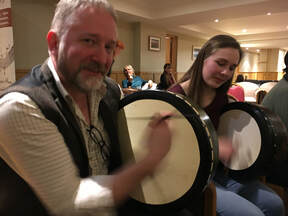 At one point, when the music was just too advanced for me, I asked the father of one of the young fiddlers how to play the bodhran - an Irish framed drum. Since I played snare in the City of Juneau Pipe Band, I thought Iʼd have better luck. He was a great teacher and told me to remember that most of the rhythms can be played by thinking "Watermelon." And he was right!As we moved into Sunday, I was identifying more of the patterns and hearing the relationships between notes and phrases. The whole of the group played with more joy, musicality and connection to one another without music in front of them. This became even more evident when we were given music for one tune by a visiting musician. All of a sudden, heads were buried in the music. Yes, I felt like I could finally hang with the big wigs and shout out, "See, I can play!" but I could hear the difference in the groupʼs sound. We were disjointed, more mechanical and no longer focused on one another, but on a single piece of paper. We looked more serious than joyful. It reminded me of Davidʼs story.  Davidʼs Story: David plays the fiddle and learned traditionally by ear. He shared that his granddaughter was banned from school orchestra because she couldnʼt read music, yet played at an advanced level. David said it was fèisean like these where his granddaughter discovered that she wasnʼt alone and that another world existed where she could "play like her grandpa." She has since been invited back to her school orchestra. David said sheʼs learned how to navigate both worlds, but sadly has learned not to mention grandpa in school. I know this heartbreaking story has been told by others on both side of the Atlantic. I wonʼt forget this story, David. Thank you for telling it and allowing me to share it.  The videos below are just snapshots of this inspiring weekend. This first is a tune led by Iain Frasier and his brother, Alasdair. The second is one of the evening sessions with folks gathered in the common space of the hotel. Many thanks to Director, Bridget Gray (photo to the right), for creating a community music program for all ages to experience the joys of making-music together. Click here for more photos and videos of the Winter Fiddle Festival. And for more information on the incredible work of the Merlin Academy of Traditional Music, including their weekly lessons and summer camp in August 2019, check out their website. |
Lorrie HeagyThis is a personal blog, sharing my experiences living in the UK from January - June 2019 as a Fulbright Distinguished Award in Teaching scholar. This blog is not an official site of the Fulbright Program or the U.S. Department of State. The views expressed on this site are entirely my own and do not represent the views of the Fulbright Program, the U.S. Department of State, or any of its partner organizations. Archives
July 2019
Categories
|


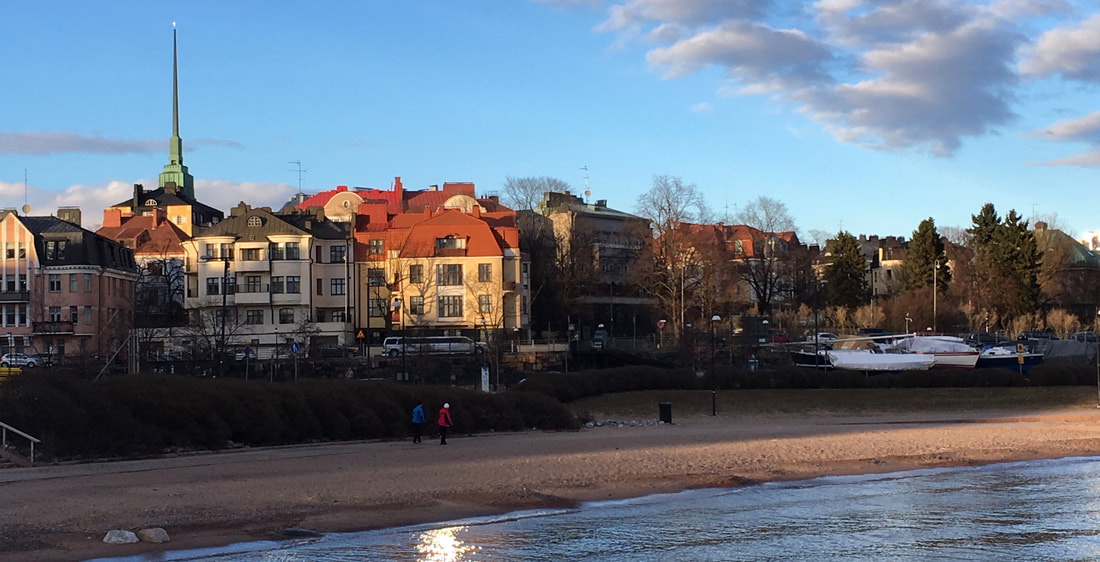

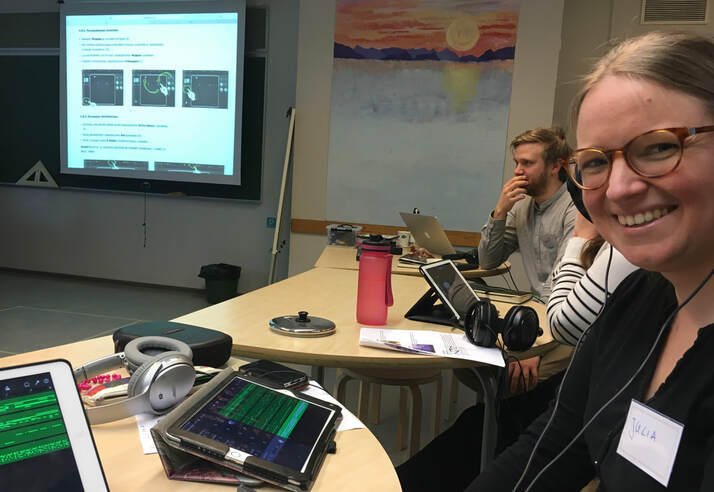


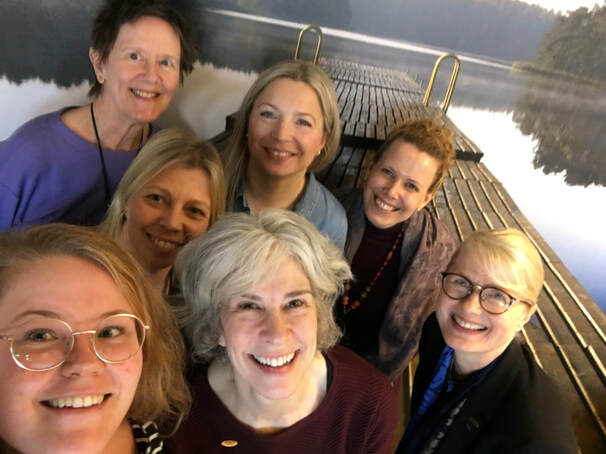
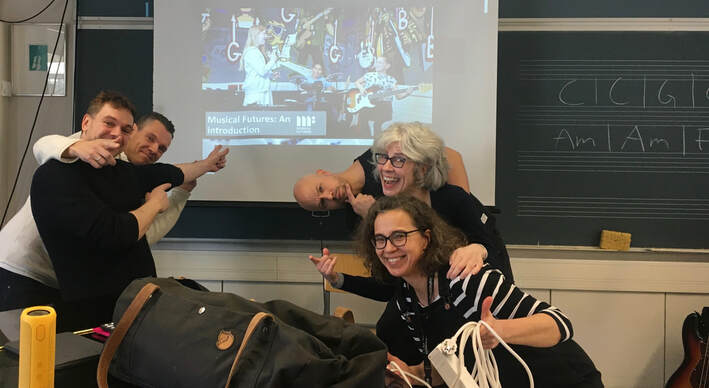


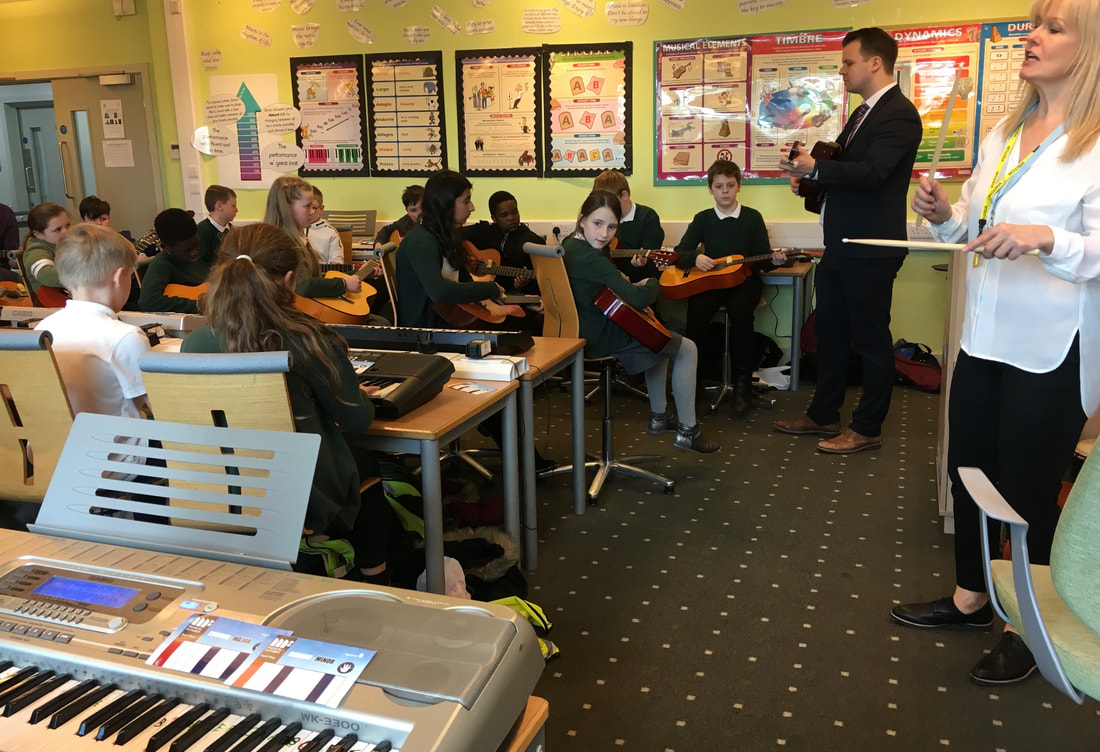

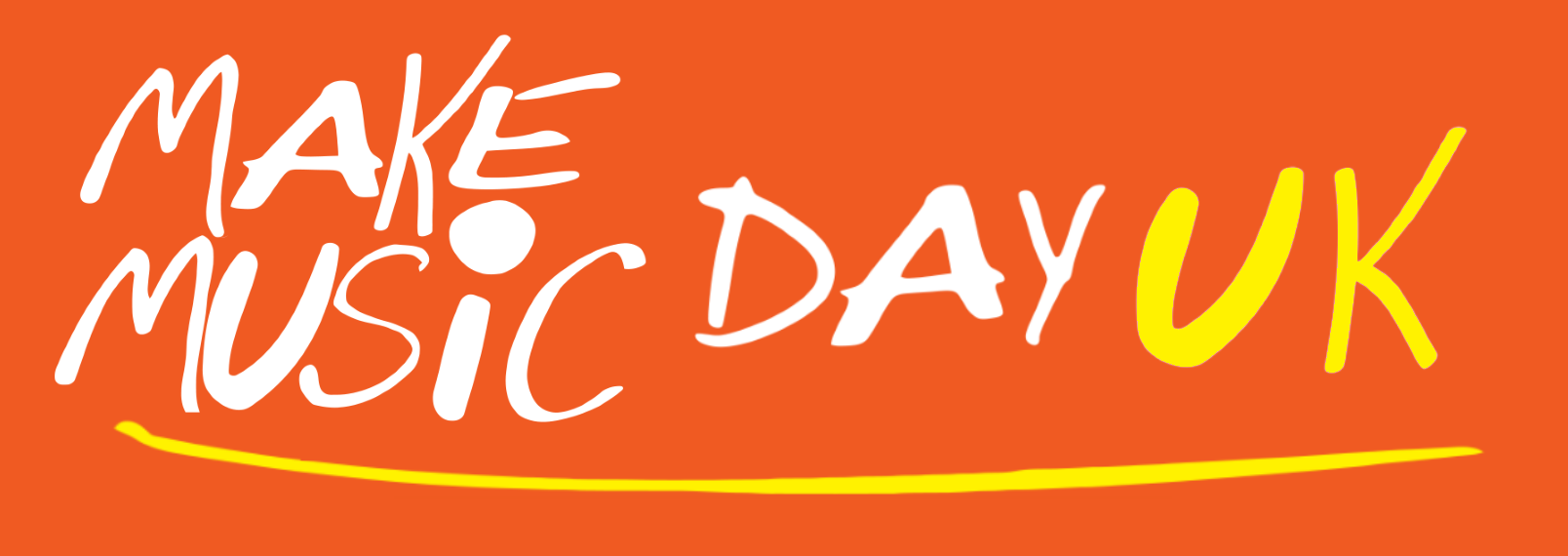
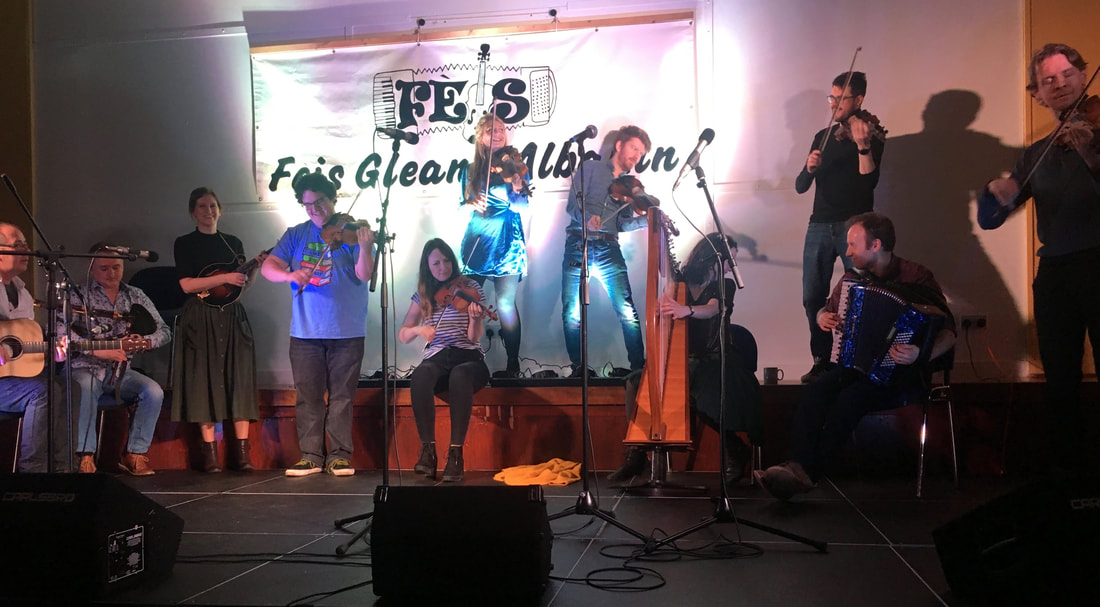


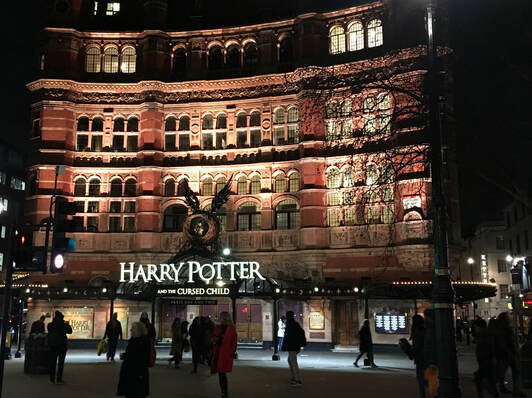





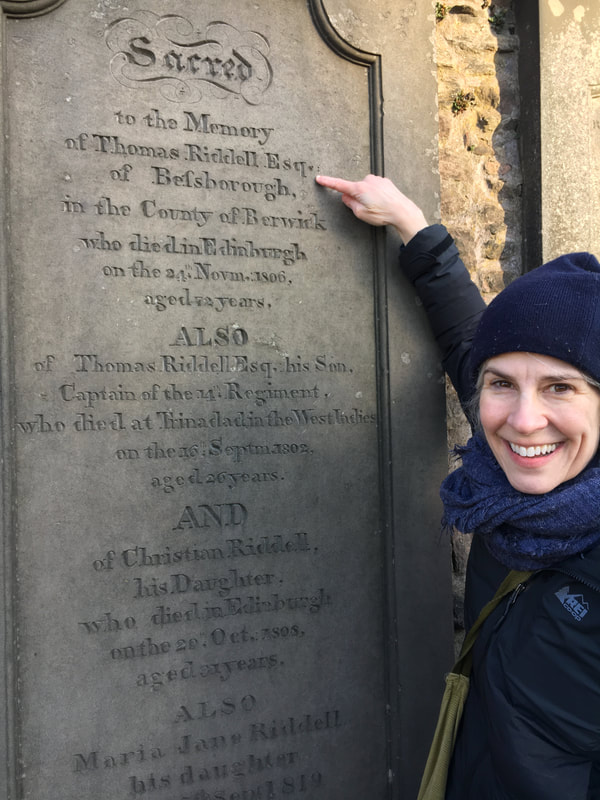

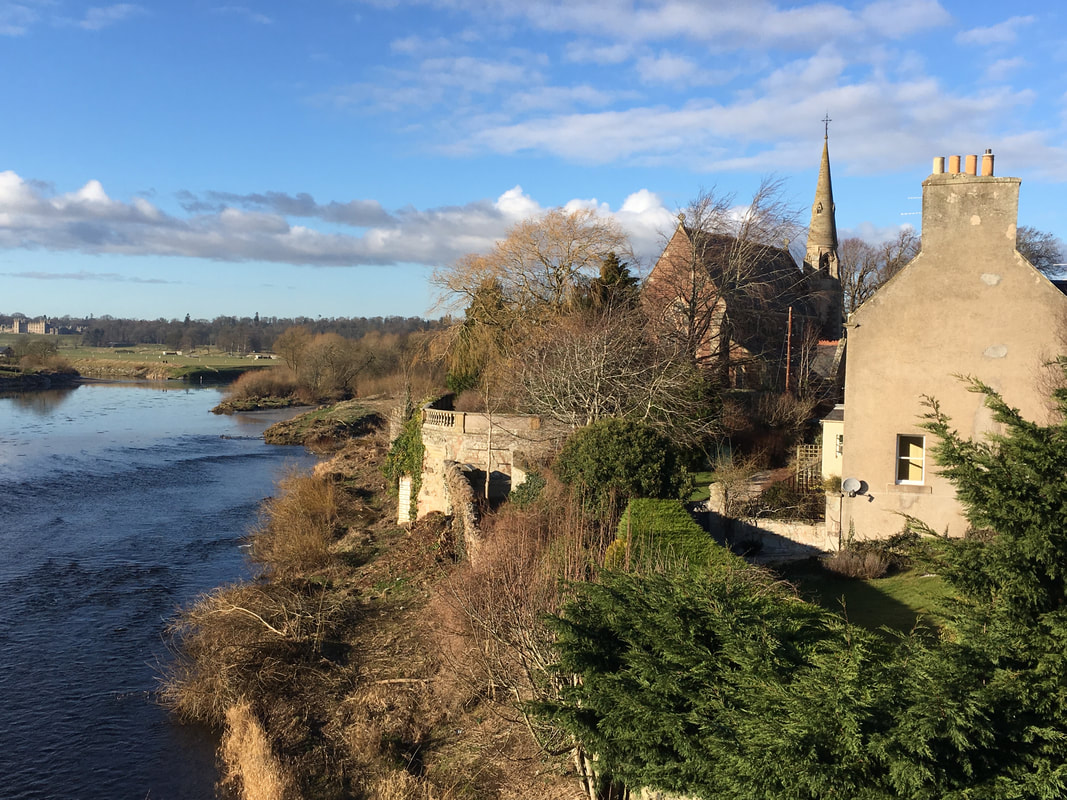



 RSS Feed
RSS Feed
